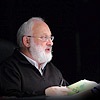The Notions Described In The Torah Represent Spiritual Actions
 The revelation of the Creator happens in the Light of Hochma. The Light of Hassadim, bestowal for the sake of bestowal, is simply a preparation for the soul to receive the Light. We cross Machsom, attain the property of bestowal (the intention of “for the sake of bestowal” – the property of Bina) and remain in this state during the period of correction “40 years in the desert,” until we finally reach correction by filling our desires with the Light of Hassadim.
The revelation of the Creator happens in the Light of Hochma. The Light of Hassadim, bestowal for the sake of bestowal, is simply a preparation for the soul to receive the Light. We cross Machsom, attain the property of bestowal (the intention of “for the sake of bestowal” – the property of Bina) and remain in this state during the period of correction “40 years in the desert,” until we finally reach correction by filling our desires with the Light of Hassadim.
Later on we begin to “receive for the sake of giving.” We “step into the Land of Israel,” where the word “Eretz” means “land” and is derived from the word “Ratzon” – desire, and Isra-el stands for “directly to the Creator.” We use our desire to receive for the sake of bestowal by revealing the Creator (the Light of Hochma in the Light of Hassadim). This is why it is written that the Creator reveals himself only in the “Land of Israel” (the desire to give), and the exodus from Israel is called banishment or exile (from giving and spirituality).
Between the words “exile” (Golah) and “redemption” (Geula) there is only one letter that differs, “Alef,” which stands for the Creator (the First and the Only One in the world). “The Land of Israel” is a desire in which we receive for the sake of giving. Those desires through which we are not able to receive and reveal the Creator, which serve only to give for the sake of bestowal, signify that we are not yet in the Land of Israel, but are close to it.
This is why Kabbalah describes various areas as circles around the Land of Israel. We gradually distance ourselves from Babylon and conquer the Land of Israel by correcting our desires step by step. However, we are dealing with the same desire, a desire which stays constant, with only our attitude changing.
We leave Babylon, arrive in Egypt and then leave Egypt as we pass through various desires with self-serving intentions. We agree to restrict these desires, which means crossing the Ultimate Sea.
We are ready to rise above our egoism, above the mountain of Sinai (the mountain of hatred) and connect with unfamiliar desires (“Love your neighbor as thyself.”) It’s not that we acquire the same desires as our neighbor, but rather we turn our own desires inside out like a glove, making their aim “for the sake of our neighbor” instead of ourselves.
Later we become ready to receive pleasure through those desires, yet not for our own sake as before, but for the sake of bestowal, for the sake of our neighbor. The desires of others become more important to us than our own, giving us an “indirect” fulfillment of our desires as opposed to “direct” fulfillment.
It follows that all the notions described in the Torah – such as Egypt, Mount Sinai, 40 years in the Sinai desert, and the Land of Israel – stand for spiritual actions inside of the same desire. The only thing that changes is our attitude toward the way we implement our desires. Then, what we thought was geography and history becomes an internal portrait.
Gradually we will come to the correct outlook and will be taken aback, asking ourselves, “How could we have been so wrong as to think that the Torah taught us about external historic events and geography?” We won’t even believe that we used to see the Torah as a historical novel. It will become so natural for us to understand that it speaks of human desires through which we attain spirituality. The only thing outside of us is Olam HaMedumeh – a world of illusions.







Discussion | Share Feedback | Ask a question